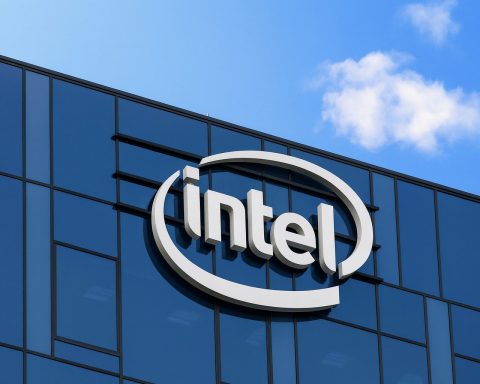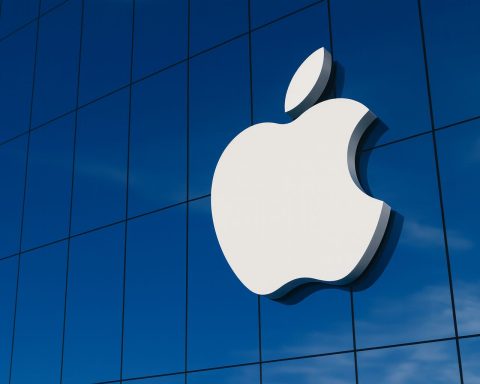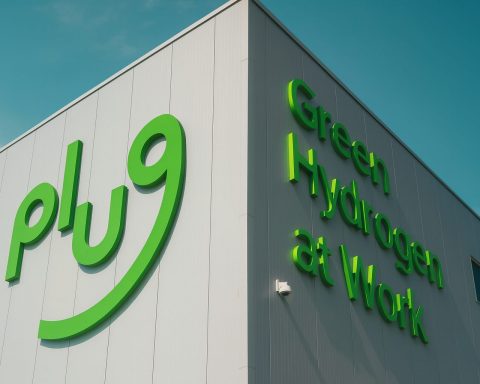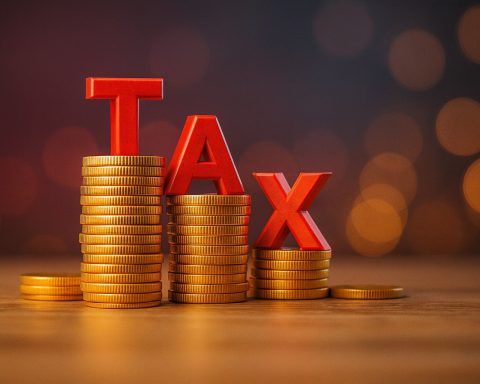London, Monday 24 November 2025
Chancellor Rachel Reeves is preparing a high‑stakes Budget on Wednesday that will combine an above‑inflation pay rise for pensioners, the scrapping of the two‑child benefit cap and a wider £15bn expansion of welfare – all funded by a fresh wave of tax rises hitting wealthier households and millions of workers. [1]
With the UK’s fiscal watchdog expected to downgrade growth forecasts and a £20bn hole in the public finances to fill, this second Labour Budget is being cast in Westminster as a “make‑or‑break” moment for both Reeves and Prime Minister Keir Starmer. [2]
£550 above‑inflation state pension rise for 13 million pensioners
One of the headline giveaways is a sizeable uplift to the state pension.
- Around 13 million pensioners are expected to benefit from a higher‑than‑inflation rise confirmed in Wednesday’s Budget.
- Those on the full new state pension are set to receive more than £550 a year extra, thanks to Labour’s continued commitment to the “triple lock” – which links pension rises to the highest of inflation, earnings or 2.5%. [3]
- Treasury briefings suggest this uplift is around £120 more than pensioners would have received if payments had simply been raised in line with inflation alone. [4]
The move is clearly aimed at reassuring older voters after the government enraged many by stripping most pensioners of the winter fuel allowance earlier this year, before partially reversing course. The generous uprating gives ministers a flagship policy to point to when critics argue that Labour has turned its back on retirees. [5]
Reeves has stressed that protecting pensioners is part of her plan to “give people security in retirement”, insisting that backing the triple lock and rebuilding the NHS to cut waiting lists are core Labour promises she intends to honour. [6]
A £15bn “welfare giveaway” – or a child‑poverty reset?
The second major pillar of the Budget is a dramatic shift in welfare policy, centred on scrapping the controversial two‑child limit on benefits.
Scrapping the two‑child benefit cap
Multiple outlets report that Reeves will abolish the two‑child limit in full for Universal Credit and related payments, rather than opting for a partial reform. [7]
- The change is estimated to cost around £3bn a year, and is seen by many Labour MPs as essential to reduce child poverty. [8]
- Ending the cap fulfils a longstanding demand from the party’s left and anti‑poverty campaigners, after the policy was blamed for pushing larger families deeper into hardship. [9]
Wider welfare package approaching £15bn
According to briefings to newspapers summarised in Monday’s political round‑ups, the removal of the two‑child limit is only one part of a far broader package: [10]
- Benefits uprating: Working‑age benefits are expected to rise by nearly 4%, in line with recent inflation trends.
- Winter fuel and welfare U‑turns: Reeves is reportedly reversing or softening earlier cuts to winter fuel support and some welfare reforms announced in the summer.
- Cumulative impact: When combined with changes made in the 2024 Budget, the new measures are projected (in Telegraph analysis cited by ConservativeHome) to add around £18bn to the annual benefits bill compared with when Labour took office. [11]
Supporters frame this as a historic attempt to reduce poverty and “grip the cost of living” for those on the lowest incomes. Critics on the right, including Conservative leader Kemi Badenoch and the Reform party, are already branding it a “welfare splurge” paid for by tax hikes on workers. [12]
Benefit fraud crackdown: £1.2bn in savings to offset the bill
To blunt accusations of irresponsibility, Reeves will pair the welfare expansion with a tougher stance on fraud and error in the benefits system.
- The Chancellor plans to extend targeted case reviews of Universal Credit, with the aim of rooting out incorrect or fraudulent claims.
- The Treasury expects this crackdown to deliver around £1.2bn in savings by 2031, money that will help offset the cost of scrapping the two‑child cap and raising benefits. [13]
Ministers insist the goal is to ensure “every pound of taxpayers’ money” goes to people who genuinely need it, rather than being lost to fraud, while still allowing the overall welfare budget to grow. Disability campaigners, however, remain wary after earlier proposals to reform disability benefits and the Motability car scheme provoked a Labour backbench revolt. [14]
How Reeves plans to pay for it all: tax rises, freezes and a “mansion levy”
Behind the eye‑catching giveaways lies a slate of revenue‑raising measures designed to both plug a £20bn gap in the public finances and keep the government on track to meet its debt‑cutting rules. [15]
1. Income tax thresholds frozen until 2030
A headline measure is expected to be an extension of the income tax threshold freeze for a further two years, from 2028 to 2030. [16]
- Thresholds have already been frozen since 2021. Keeping them fixed while wages rise drags more people into higher tax bands – the so‑called “fiscal drag” or “stealth tax” effect.
- Official estimates suggest a two‑year extension could raise around £7.5bn a year and result in roughly 960,000 more people paying income tax and 790,000 more entering the higher‑rate band by 2030. [17]
Crucially, this is a lever Reeves previously ruled out using, warning last year that frozen thresholds would “hurt working people”. Her U‑turn reflects both the scale of the fiscal hole and the political toxicity of the alternative: a direct increase in the basic rate of income tax, which had been considered but has now been abandoned. [18]
2. New property surcharge on £2m+ homes
Reports across several outlets suggest Reeves will introduce a property surcharge on homes worth over £2m – quickly dubbed a “mansion tax”, though technically structured through council tax. [19]
Key features as briefed:
- The levy is expected to affect just over 100,000 of the UK’s most expensive properties, after the threshold was lifted from a previously mooted £1.5m to £2m.
- It would be collected via council tax bills, following a revaluation of roughly 2.4 million properties in the top council tax bands.
- Payments are likely to be stepped, with more expensive homes paying more – and deferral options available until sale or death to avoid forcing “asset‑rich, cash‑poor” owners to sell up.
- Treasury projections suggest the surcharge could raise £400m–£450m a year once fully in place. [20]
Business groups and some commentators warn the measure may chill the top end of the housing market, though Treasury officials insist the overall economic impact will be limited. [21]
3. Less generous pension and salary sacrifice perks
In a move that will worry many middle‑class professionals, Reeves is also expected to tighten tax advantages around salary sacrifice schemes, especially those used for pension contributions. [22]
- For years, salary sacrifice has allowed workers and employers to cut national insurance contributions by routing pay into pensions or other benefits.
- Limiting how much can be sheltered this way would increase NI receipts and has been described in some newspapers as a “raid on middle‑class pensions” – though full details are still to emerge. [23]
4. Pay‑per‑mile tax for electric vehicles
To plug the growing hole in fuel duty as drivers shift to electric cars, the Chancellor is considering a pay‑per‑mile scheme for EVs. [24]
- The idea is to gradually replace lost petrol and diesel duty with a distance‑based charge.
- No firm start date has been briefed, but officials see road pricing as increasingly unavoidable if the UK is to maintain revenue while decarbonising transport.
5. A patchwork of smaller tax rises
While plans for a headline increase in the basic income tax rate have been shelved, Reeves is still expected to rely on a cluster of smaller taxes and base‑broadening measures, including: [25]
- Continued use of threshold freezes and allowance cuts.
- Higher duties on some luxury goods, alcohol and other targeted areas (as trailed in various newspaper reports).
- Tougher enforcement, especially in areas like benefit fraud and potentially tax compliance.
This approach has led the CBI’s director‑general Rain Newton‑Smith to warn against “death by a thousand taxes”, urging Reeves instead to focus on a few big, clearly explained decisions that support long‑term growth. [26]
Cost‑of‑living sweeteners: fares and bills
To soften the impact of tax rises, the Budget is also expected to include measures designed to ease day‑to‑day living costs:
- Rail fares freeze: Regulated rail fares in England are set to be frozen rather than increased in line with inflation, giving commuters some respite after years of above‑inflation rises. [27]
- Prescription charges frozen: NHS prescription fees in England will also be held down, providing a small but visible saving for those with regular medication costs. [28]
- Energy bill tweaks: Ministers are planning to remove certain levies from electricity bills, shifting the cost of green subsidies away from households’ monthly statements. [29]
These steps allow Reeves to argue that, even while raising taxes, she is actively trying to “grip the cost of living” and show voters tangible improvements in everyday outgoings. [30]
The politics: high jeopardy for Starmer and Reeves
Politically, Wednesday’s Budget is fraught with risk.
- Markets will be watching closely to see whether Reeves sticks to her fiscal rules and maintains credibility after last year’s large tax increases. [31]
- Labour MPs on the left will cheer the abolition of the two‑child cap and the extra money for benefits, but some want her to go further with wealth taxes on the richest. [32]
- Conservatives are gearing up to frame the entire package as proof that Labour is “taxing more to spend more” – classic attack lines that party strategists believe can revive their fortunes despite poor national polling. [33]
- Business groups, led by the CBI, are warning that constantly layering new taxes and compliance costs on firms risks prolonging the UK’s period of weak growth and deterring investment. [34]
Reeves, for her part, has bristled at personal criticism, saying she is “sick of people mansplaining how to be chancellor”, while Starmer has defended her as the UK’s first female Chancellor facing disproportionate abuse compared with male counterparts. [35]
Who are the likely winners and losers?
Based on the measures currently briefed for 24 November 2025, the emerging picture is:
Likely winners
- State pensioners – gain over £550 a year from a triple‑lock‑driven rise, more than inflation. [36]
- Low‑income families with more than two children – benefit from the scrapping of the two‑child cap, which should boost income for hundreds of thousands of households. [37]
- Most benefit claimants – see payments rise by nearly 4%, with some reversals of earlier welfare cuts. [38]
- Rail users and patients in England – gain from fare and prescription charge freezes. [39]
Likely losers
- Middle‑income workers – face higher tax bills as frozen thresholds drag them into paying more income tax without explicit rate rises. [40]
- Higher‑rate taxpayers – are especially exposed to threshold freezes and possible changes to reliefs, leaving them paying a growing share of overall tax. [41]
- Owners of £2m+ properties – will shoulder the new property surcharge, even if some can defer payment until sale or death. [42]
- Some professionals using salary sacrifice – could see national insurance and income tax bills rise if schemes become less generous. [43]
- Future EV drivers – may eventually pay new per‑mile road charges, even as running costs remain lower than petrol or diesel. [44]
What to watch for on Budget day
When Reeves stands at the despatch box on Wednesday, several questions will determine how this Budget lands:
- Final welfare and pension numbers – How closely do the official costings match early estimates of a £15bn welfare expansion and a £550 pension rise? [45]
- Scale of tax rises – Does the Treasury lean more on the threshold freeze and property surcharge, or are additional surprise measures unveiled? [46]
- OBR growth downgrade – How sharply does the Office for Budget Responsibility cut its forecasts, and how much harder does that make Reeves’ debt‑reduction pledge? [47]
- Market reaction – Do gilt yields and sterling remain steady, suggesting investors are reassured, or do they move against the government, signalling doubts about its plans? [48]
- Public opinion – Early polling will show whether voters see the Budget as fair and focused on the cost of living, or as yet another round of tax grabs. [49]
What is already clear, as of 24 November 2025, is that Rachel Reeves is gambling that voters will tolerate higher, more broadly based taxes if they see real action on pensions, child poverty and the cost of everyday essentials. Whether that gamble pays off – for households, markets and Labour’s political fortunes – will become evident in the days and months after Wednesday’s crucial statement.
References
1. news.sky.com, 2. news.sky.com, 3. news.sky.com, 4. www.theguardian.com, 5. news.sky.com, 6. news.sky.com, 7. www.reuters.com, 8. www.reuters.com, 9. www.theguardian.com, 10. conservativehome.com, 11. conservativehome.com, 12. www.theguardian.com, 13. www.theguardian.com, 14. www.theguardian.com, 15. news.sky.com, 16. www.itv.com, 17. www.itv.com, 18. news.sky.com, 19. conservativehome.com, 20. conservativehome.com, 21. conservativehome.com, 22. news.sky.com, 23. conservativehome.com, 24. www.theguardian.com, 25. news.sky.com, 26. www.the-independent.com, 27. www.theguardian.com, 28. www.theguardian.com, 29. www.theguardian.com, 30. www.theguardian.com, 31. www.reuters.com, 32. www.theguardian.com, 33. news.sky.com, 34. www.the-independent.com, 35. www.theguardian.com, 36. news.sky.com, 37. www.reuters.com, 38. conservativehome.com, 39. www.theguardian.com, 40. www.itv.com, 41. news.sky.com, 42. conservativehome.com, 43. www.theguardian.com, 44. www.theguardian.com, 45. news.sky.com, 46. news.sky.com, 47. www.reuters.com, 48. www.reuters.com, 49. news.sky.com








